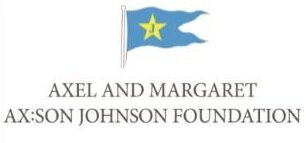Wednesday 3 March, 17.15
Microsoft teams Meeting: Please email info@ccw.ox.ac.uk to be invited.
Advantage at Sea: A discussion on the recently released Tri-Service Maritime Strategy by the U.S. Navy, U.S. Marine Corps, and U.S. Coast Guard
Rear Admiral James Bynum, Office of the Chief of Naval Operations
Advantage at Sea explains both how naval forces will be employed and how naval forces will be developed to continue to secure our nation's interests. Key messages from this strategy that will be discussed:
China is the United States’ most pressing threat. It also represents a comprehensive threat to our allies and partners, and all nations that support a free and open system.
We must compete and win in day-to-day competition, and be ready for high-end conflict. The Naval Service will uphold maritime governance and counter malign behaviors below the threshold of war during the day-to-day through assertive and persistent operations. Operating our naval forces far forward—in harm’s way and in contested environments—raises the risks for rivals considering the path of escalation and prevents crisis from escalating into war. If our adversaries choose the path of war, we will fight alongside the Army, Air Force, Space Force, our allies, and our partners to deny enemy objectives, destroy enemy forces, and compel war termination.
We need to increase our emphasis on controlling the seas. We can no longer assume we will have unfettered access to the oceans. Our ability to control the seas enables everything we do.
Allies and partners are an enduring strategic advantage. The Strategy makes clear that we view our network of allies and partners as an asymmetric advantage over our competitors. They help uphold international norms, generate military power, and provide access to valuable strategic positions. We must strengthen and expand these relationships to ensure our success in competition, crisis, and conflict. Acting with unity of effort, like-minded-nations generate enormous power to modify malign behavior in the maritime domain.
We need to modernize and integrate our Navy, Marine Corps, and Coast Guard forces, and leverage our combined authorities, capabilities, and capacities. We must become more interoperable, more integrated, and more effective than ever before. The Naval Service will develop an integrated all-domain naval force through training and education; capabilities and networks; plans, exercises, and experiments; analysis and wargaming; investments and innovation; and force design. We will collaborate with our allies and partners across these lines of effort to build capability, enhance interoperability, and generate unity of effort.
Rear Adm. James (Jay) Bynum is a native of Waco, Texas, and was commissioned via the Naval Reserve Officers Training Corps (NROTC) program at the University of Oklahoma. A career F/A-18 pilot, he holds a Bachelor of Arts in Database Management and is a Georgetown University Capitol Hill Fellow. He is a graduate of the Armed Forces Staff College and the U.S. Air Force Air Command and Staff College. He holds subspecialties in financial management and strategy.
His operational assignments include tours with Strike Fighter Squadron (VFA) 113, VFA-22 and a tour under the services Personnel Exchange Program where he deployed with the U.S. Air Force’s 94th Fighter Squadron. He commanded VFA-27, as part of the forward deployed U.S. Naval Forces in Japan, and Carrier Air Wing 3 as part of the Harry S. Truman Strike Group where he deployed in support of Operations Iraqi Freedom and Enduring Freedom respectively.
Ashore, Bynum served as an instructor pilot, military legislative aide and Capitol Hill fellow on the staff of U.S. Sen. John S. McCain (R-AZ) and as senior readiness programmer/analyst for Navy issues, as well as intelligence, surveillance and reconnaissance programs while attached to the Office of the Secretary of Defense. He later served in the Aviation Warfare Section of the Navy’s Program Development Staff, was the executive assistant to Commander, U.S. Naval Air Forces in San Diego, and the executive assistant to the Vice Chief of Naval Operations.
He is currently serving in a dual capacity as the deputy N7 and director, Warfare Development (N72), on the OPNAV staff. His previous flag assignments include director, Assessments Division (N81) on the OPNAV staff, Chief of Naval Air Training, Commander, Carrier Strike Group 9, Theodore Roosevelt Strike Group, and deputy director of the White House Military Office.





